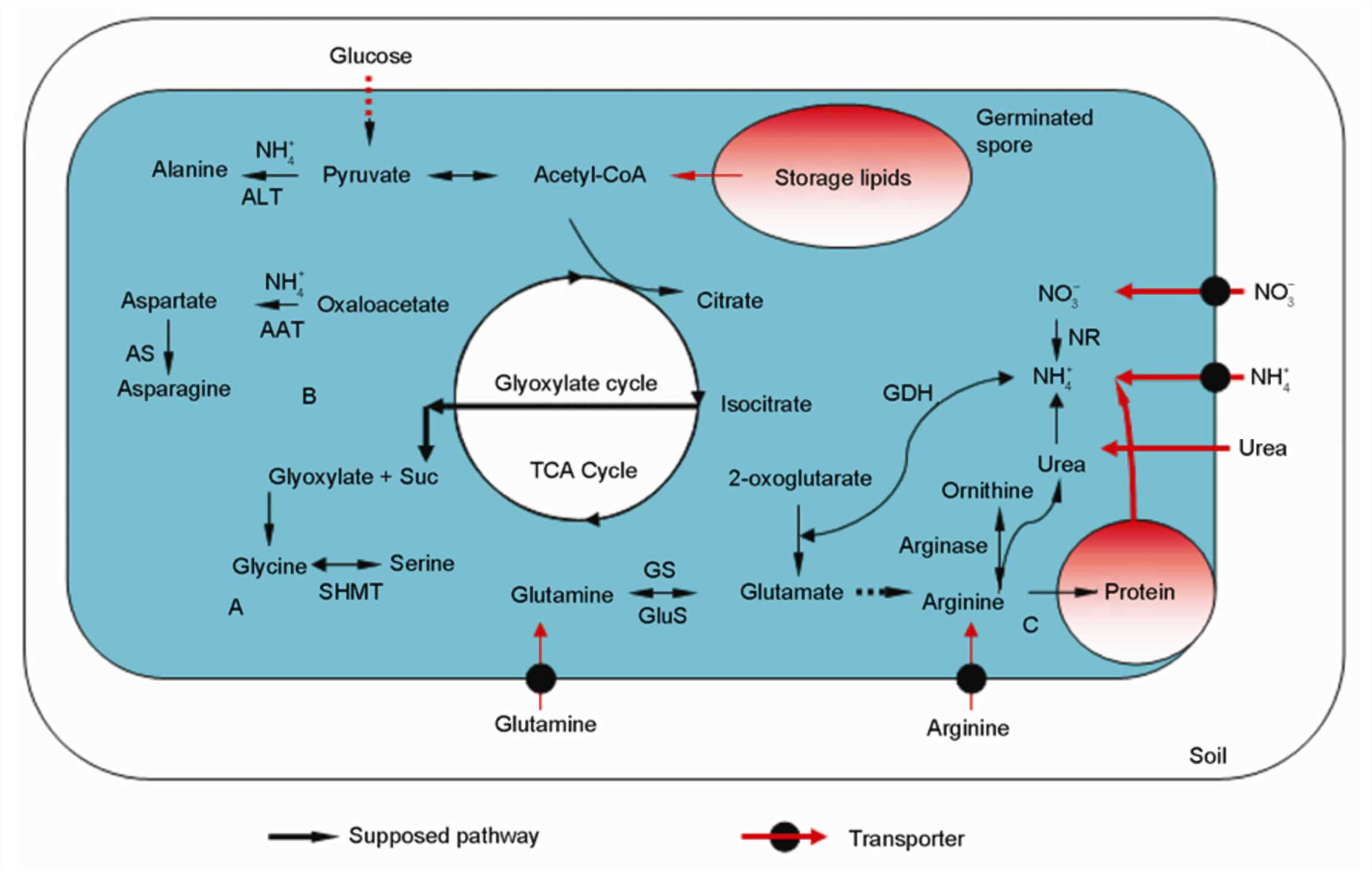Pathogenic fungi change the morphology to a suitable vegetative form such as Y (unicellular yeast) or H (filamentous mycelium) for their survival and proliferation in the host. Different biochemical processes can be triggered under certain conditions leading to morphological changes. Consequently, these biochemical processes can be targeted for the development of novel antifungal agents. Glutamate dehydrogenase is one of the enzymes demonstrated to be associated with the morphological changes of fungi. Supported by our cutting-edge technologies and rich experience, Creative Biolabs now offers antifungal drug development services against glutamate dehydrogenase.
Introduction of Glutamate Dehydrogenase
Glutamate dehydrogenase (GDH) is a type of enzyme that catalyzes the reversible reductive amination of 2-oxoglutarate to glutamate. The reaction of GDH needs the existence of a cofactor, either NAD+ or NADP+. Based on which cofactor is used, the enzyme may be NAD+ specific (EC 1.4.1.2), NADP+ specific (EC1.4.1.4), or able to use either cofactor (EC 1.4.1.3). GDHs lie at an important branch point in metabolism as they provide the link between amino acid metabolism and the tricarboxylic acid cycle. The catalytic activities of GDHs result in either oxidative deamination or in reductive amination according to the following reactions:
 Fig. 1 A model of the major metabolic pathway for nitrogen (N) and carbon (C) in germinating spores of arbuscular mycorrhizal (AM) fungi G. intraradices.1
Fig. 1 A model of the major metabolic pathway for nitrogen (N) and carbon (C) in germinating spores of arbuscular mycorrhizal (AM) fungi G. intraradices.1
GDH as an Antifungal Drug Discovery Target
Besides playing a role in ammonia-assimilating and nitrogen metabolism, GDH enzymes have been reported to be associated with Y-H transition (Y, unicellular yeast to H, hypha) of fungi. The relative proportion of NAD- and NADP-GDHs showed a correlation with Y-H transition in B.poitrasii, and disruption of NADP-GDH gene was found to affect morphology in Penicillium chrysogenum. Therefore, GDH inhibitors could be used as antifungal drugs to control fungal pathogenesis.
Inhibitors of GDHs
Studies have reported some GDH inhibitors, which are mainly competitive inhibitors and analogs of the substrates, i.e. 2-ketoglutarate and L-glutamate. For instance, isophthalate is one of the most studied inhibitors of both NAD-GDH and NAD(P)-GDH of fungi. Analogs of 2-ketoglutarate such as 2-oxoglutarate, 2-iminoglutarate, 2-methyleneglutarate, 2,4-pyridine dicarboxylate, 3,5-pyrazole carboxylate, and others have been reported to be screened for the inhibition of NADP-GDH from Aspergillus niger. Besides, 1,2,3 triazole-linked β-lactam–bile acid conjugates were discovered to be potent inhibitors of purified NAD-GDH and affect Y-H transition in B. poitrasii.
Features of Our Services
As a well-trusted drug discovery and development company, Creative Biolabs offers fully-integrated contract research services for antifungal drug development, including target identification and validation, hit identification, hit to lead, lead optimization, and IND-enabling services. We provide services characterized by:
-
Years of drug discovery experience and expertise
-
Customized services to meet the specific needs of your drug discovery program
-
Expert scientists and staff with keen project and program management skills
-
Individualized technical support and best after-sale services from our scientific team
Creative Biolabs is open to discussions and is happy to make it accessible to all kinds of research requirements. If you are interested in our services, contact us to learn more information.
Reference
-
Jin, H. R.; et al. Forms of nitrogen uptake, translocation, and transfer via arbuscular mycorrhizal fungi: a review. Science China Life Sciences. 2012, 55(6): 474-482. Distributed under Open Access license CC BY 2.0, without modification.
For Research Use Only.


 Fig. 1 A model of the major metabolic pathway for nitrogen (N) and carbon (C) in germinating spores of arbuscular mycorrhizal (AM) fungi G. intraradices.1
Fig. 1 A model of the major metabolic pathway for nitrogen (N) and carbon (C) in germinating spores of arbuscular mycorrhizal (AM) fungi G. intraradices.1


